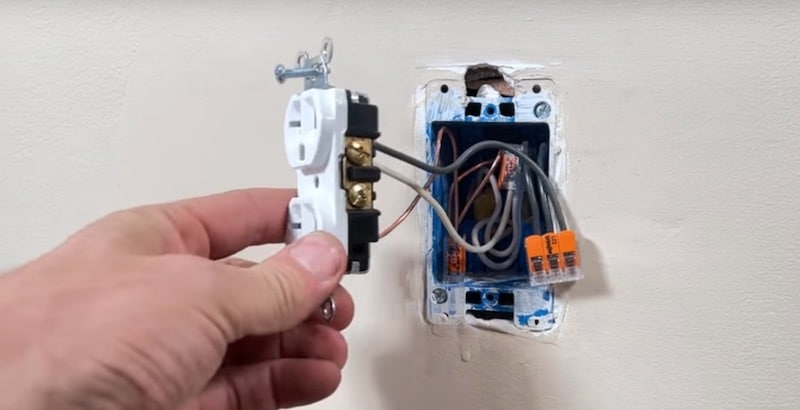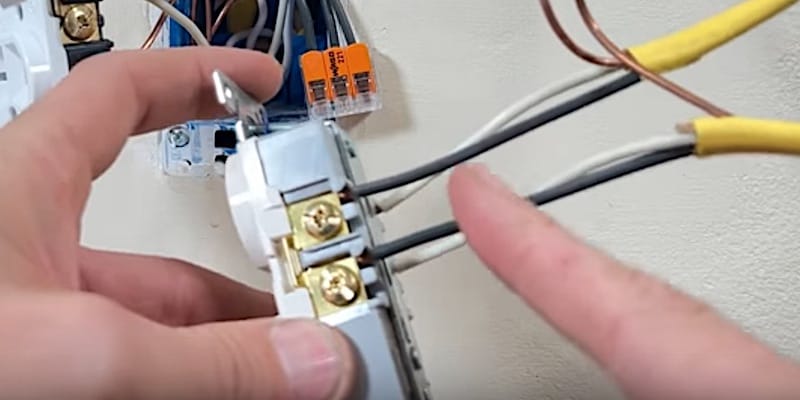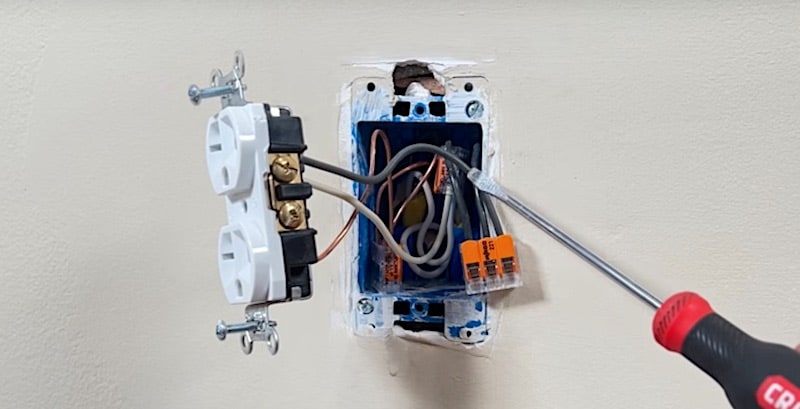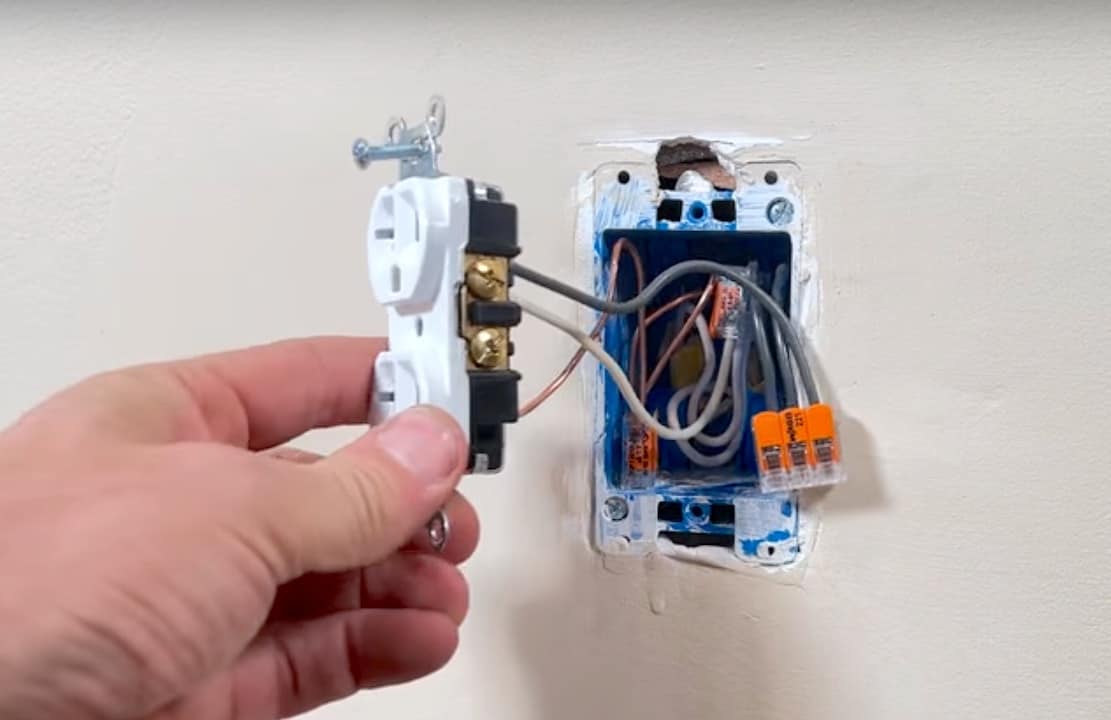In other tutorials, I’ve talked about how to create a pigtail when wiring up an electrical outlet. What I haven’t really addressed previously is the “why” behind using a pigtail, so today we’re going to dive a little deeper into that.
A pigtail, when we’re talking about electrical wiring, is made up of the three wires — hot, neutral, and ground — that go from a connector, such as a WAGO lever nut or traditional wire nut, to a receptacle when you have multiple pieces of Romex coming into the electrical box.
If you have an upcoming DIY electrical project concerning outlets, it could be useful to read this quick article beforehand. You’ll find links to other related articles at the end for more in-depth reading.
Rather watch than read? Check out this 3-minute video.
DISCLAIMER: This video and description contain affiliate links, which means that if you click on one of the product links, I’ll receive a small commission at no extra cost to you. Thanks for the support!
Why Use A Pigtail When Wiring An Outlet: Supplies
Supplies
- Most popular WAGO 221 Kit
What Is a Pigtail in Electrical Wiring?
First, let’s make sure we’re clear on terminology.
The three “strands” of the pigtail in electrical wiring are the hot, neutral, and ground wires that are pulled from a connector to a receptacle.

The connectors I’m using here are WAGO 221 lever nuts but they could be old-school wire nuts.
In this box, I have three WAGO connectors, one for hot, one for neutral, and one for ground. You see that one wire of each type is coming to my outlet from each of the connectors. That is my pigtail.
The power that is coming into the WAGO connector is going out in two directions: into the receptacle, as we just said, and also back out to the Romex that will carry power to the next stop on the circuit.
Why a Pigtail is Better: Practical and Code Reasons
Here I’ve mocked up an example of a receptacle not wired with a pigtail. In this example, we’re leveraging the back-wiring facility of a commercial-grade Eaton outlet.

Just like in my electrical box, we have two pieces of Romex. One’s providing power and one’s taking it away and carrying it down the circuit.
With this type of outlet, you have spots for four different hots and four different neutrals. You really don’t want to take advantage of all that capacity.
Why is that?
From a practical standpoint, the pigtail is a lot easier to deal with because it takes up less space. The back-wired receptacle has 5 wires attached to it — 2 hot, 2 neutral, and 1 ground (that isn’t connected in the example). I’ll have to fight with the back-wired receptacle a lot more than I would with my pigtailed outlet to get it back into the electrical box.
More importantly, from the perspective of electrical code, I should not be depending on a device to provide power to a receptacle downstream. The reasoning behind this is that if the device fails, all the outlets downstream of it will be knocked out as well.
For a more in-depth examination of code regarding this topic, please have a look at the discussion forum NEC 300.13 & Pigtails.
By using a pigtail, you avoid the possibility of this domino effect because the receptacle is isolated.
You can see that when we use a pigtail, power is connected through the wire nut. I’m pulling power from the WAGO lever nut to the receptacle from the chamber on the end.

The flow of current from the source to the outlets downstream, however, is maintained by the busbar in the WAGO connector.
The WAGO 221 lever nut is my preferred wire connector and a great option for DIYers. Even though it’s a little more costly than a traditional wire nut, I think it’s worth the additional expense.
Why Use A Pigtail When Wiring An Outlet: Conclusion
Rewiring using pigtails is an easy way to eliminate the possibility of the domino effect in your circuit. It isolates the receptacles so that outlets downstream of a defective device are not put out of commission along with the failed component.
This can be particularly helpful when you’re troubleshooting electrical problems in old homes, where you see this problem quite often.
More importantly, if you have a multiwire circuit you need to use pigtails to ensure you are meeting code NEC 300.13(B) which focuses on ensuring the neutral connection is not interrupted by a failed device.
Other Outlet-Related Videos and Articles
To learn more about outlets and pigtails, check out:
- 10 Things You Didn’t Know About Outlets (video)
- Dangers of Speed Wiring | Why Back Wiring an Outlet is Best (article)
- How to Wire a GFCI Outlet (article)
- NEC 300.13 & Pigtails (discussion forum)
To Leave Comments and Questions
If something doesn’t make sense or if you have questions, please leave a comment under the YouTube video. I check the comments daily and am happy to help out. You’ll find helpful comments from viewers there as well.
Don’t forget to subscribe to our YouTube channel as we have weekly videos coming out to help you with your everyday home repairs.
Thanks for stopping by!




